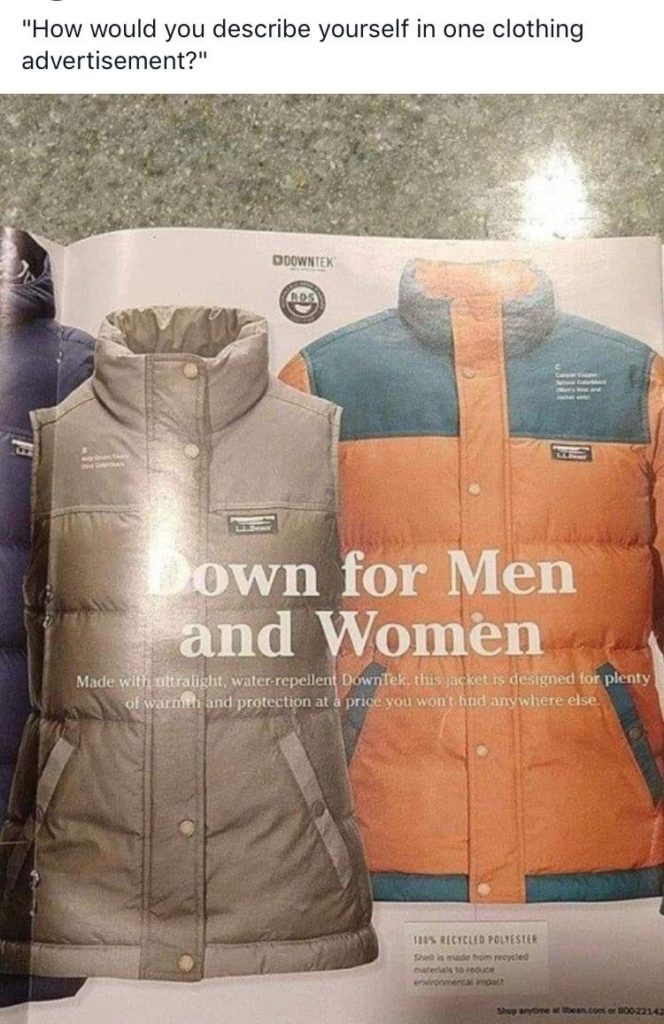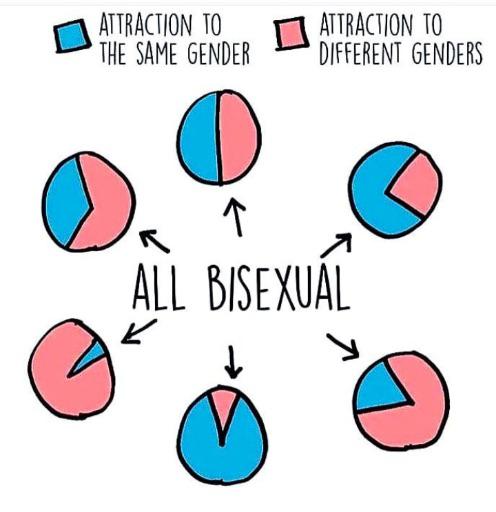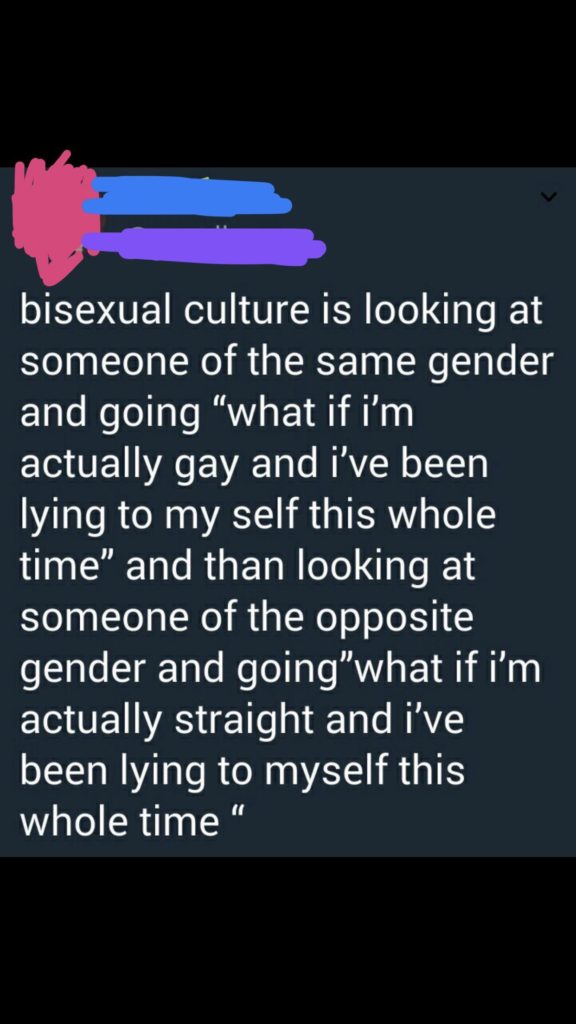Hey! I’m here today to talk about bisexuality.

I first want to mention that there’s some controversy about the term “bisexual,” which means attracted to both genders, as some believe it enforces the gender binary. Some prefer the term “pansexual” which means that a person can feel attraction to someone of any gender identity or expression. Here, I’d like to use these terms interchangeably and assert that my operational definition of someone who identifies as bisexual is a person who feels sexual attraction to persons regardless of gender. This isn’t to say that bisexual people are attracted to everyone — that’s one of the many stereotypes that exists around bisexuality. Bi people can still be choosy! But I digress.
As people explore their sexuality, they may find that they’re attracted to folks of different genders. Depending on one’s cultural upbringing, this can be a shameful or hard pill to swallow. Some choose to repress these feelings to a point they might not even notice them for a time. Some avoid the feelings, only bringing them up in specific contexts or later in life. And some have the freedom to explore these feelings.
Cool! Let’s talk about some of the research on bisexuality.

Most folks have heard of the Kinsey scale. Alfred Kinsey devised a scale in the 1940s and 50s to describe folks’ sexual activities with same or other genders. His scale ranged from 0, exclusively heterosexual, to 6, exclusively homosexual. A person landing at a 3 feels attraction equally to same and other-gendered partners. This was an early attempt at creating a spectrum of sexuality, an assertion that binaries, well, kind of… don’t fit for regular human behaviors. Kinsey published a report that discussed Americans’ sex lives and private sexual behaviors which was controversial yet important in elucidating the fluidity of human sexuality. Folks today colloquially refer to the work of Kinsey to describe their sexual orientation.
In my opinion, Kinsey’s scale was a great building block for future research on sexuality because it lifted the veil off of humans’ private sexual behaviors — exposure helped counteract societal strictness on sexuality and the shame which followed. However, there’s still a lot not accounted for in Kinsey’s model.
By the late 1970s, sex researcher Fritz Klein released a book entitled The Bisexual Option (guess what it’s about!), in which he presented the Klein Sexual Orientation Grid (KSOG). This model expanded on Kinsey’s scale to include other aspects of sexuality such as attraction, behavior, fantasy, preference, and self-identification. People are asked to rate using the Kinsey scale past, present, and ideal/future orientations.

I like Klein’s scale because it encourages the user to reflect on their sexuality in the past as well as in the moment, and to consider one’s own sexuality as a multifaceted thing: guess what! If you are someone who hasn’t had sex with someone of the same gender (yet, you might be saying!), you are still valid as a human being. Yes, if you consider yourself to be bisexual, queer, pan, whatever, but haven’t acted on it — or maybe don’t plan to act on it — still valid. Klein’s model gives us something to talk about in session — the way things were, the way things are, the way you’d like things to be — so we can, what… find out what we want ourselves, and be that? Yes.

I say this because in some ways, bisexual folks get the brunt of our heteronormative culture’s wrath. All sexual minorities (non hetero folks, non cis folks) face stressful situations and consequences while stepping outside of societal norms. I’ve spoken with a bunch of gender-free lovers (read: bi people) in my time and many are struggling with ingrained stereotypes about bisexuality, internalized homophobia, gender role confusion, nonacceptance, and erasure of their own sexual orientation among other issues that can create mental health disparities.
Yet, bisexual folks are all over. They comprise over half of the LGBT population in the United States. You definitely know some cool bi folks. (Hi.)
Bisexual stereotypes are everywhere: Bisexuality is treated as a phase on the way to actually accepting that one is “really” gay. Bisexual women are seen as attention seeking, whereas bisexual men are perceived to be “actually” gay but pretending to like women (interesting how the stereotypes always assume a preference for men!). The fluid nature of sexuality, in this way, becomes minimized. Some say people aren’t “really” bi unless they have had partners of different genders in real life. Another stereotype is that bisexual people cannot be monogamous and must exist in nonmonogamous or polyamorous relationships because for them, to commit to a partner is to “choose a side.”

These stereotypes, and the many more that persist, are indicative of larger societal non-acceptance of sexual minority individuals, could possibly be damaging to bisexual persons’ senses of identity and self, and may lead to acts of discrimination against persons that identify as bisexual. Discrimination against sexual minorities based on religious and cultural grounds is common in the United States, and affects bisexual persons who date partners of the same sex, step outside gender binaries, or differ from heteronormative culture or dominant religious values in other ways.

Bisexual persons may also face discrimination from inside the LGBT community. A phenomenon known as “bisexual erasure” describes humans’ tendencies to categorize persons based on sexual orientation in a binary system of heterosexual and homosexual. This binary can lead people to “erase” bisexuality and bisexual individuals, claiming they are either gay or straight based on the sex or gender expression of their current partner. Indeed, popular culture often portrays characters who once were attracted to one gender, and later develop attractions for another gender, as having “switched” from heterosexual to homosexual, or vice versa, erasing the possibility of bisexuality entirely, and perpetuating the stereotype as bisexuality as “just a phase” or a period of “confusion.” Surprisingly, many in the LGBT community perpetuate this falsehood, despite having faced stereotyping and discrimination for their own sexual orientations.
So, what does this all mean? Mostly, in my work, it means undoing a lot of societal programming. Bisexual people have been led to believe that their sexuality is not valid. This is another reason I encourage folks to consider the Klein grid. It can allow you to look into your sexuality in your own, real way, and encourage you to consider that your sexuality is made up of multiple facets — including what you want for yourself — one of the most important facets of all!
Guess what! You’re valid.

(If you’d like some more scientific article-y research stuff on bi-ness, you can check out a paper I wrote on bisexuality when I was in school, here.)